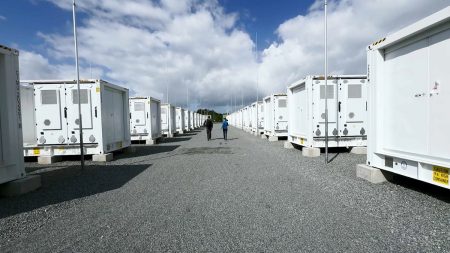Japan’s Self Defense Force recently patrolled the Taiwan Strait for the first time, in an attempt to send a message to China. The patrol was conducted by the SDF destroyer Sazanami, which entered the waters from the East China Sea and spent over 10 hours sailing southward to complete the passage. The patrol was carried out in collaboration with naval ships from Australia and New Zealand, according to reports from the Yomiuri newspaper. The move comes amidst increasing tensions between Japan and China over territorial disputes in the region.
The SDF’s patrol of the Taiwan Strait is seen as a message to China, which has been increasingly assertive in the region. The Japanese government has expressed concern over China’s growing military presence in the area, particularly in relation to Taiwan. Japan’s move to patrol the Taiwan Strait is part of a broader strategy to enhance its security cooperation with like-minded nations in the region, such as Australia and New Zealand. The coordination of naval ships from these countries during the patrol demonstrates a united front against Chinese aggression.
The timing of Japan’s patrol of the Taiwan Strait is significant, as it comes shortly after a Russian patrol aircraft violated Japanese airspace. In response, Japan fired warning flares to deter the Russian aircraft. This incident highlights the complex security challenges facing Japan in the region, as it navigates tensions with both China and Russia. Japan’s decision to conduct the patrol with naval ships from Australia and New Zealand indicates its commitment to strengthening security partnerships with key allies to address shared security concerns.
The SDF’s presence in the Taiwan Strait represents a shift in Japan’s security posture, as it takes proactive steps to address growing security challenges in the region. The move is part of a broader effort by Japan to enhance its defense capabilities and strengthen its partnerships with like-minded nations to counter potential threats. The coordination of naval ships from Australia and New Zealand during the patrol underscores the importance of maintaining a united front against regional security challenges. By conducting joint patrols with allies, Japan aims to send a clear message to China and other potential adversaries that it is committed to upholding peace and stability in the region.
Japan’s decision to patrol the Taiwan Strait for the first time reflects its commitment to upholding international norms and promoting regional stability. The move is a clear signal to China that Japan will not tolerate any attempts to alter the status quo in the region through force or coercion. Japan’s collaboration with Australia and New Zealand during the patrol demonstrates a shared commitment to safeguarding freedom of navigation and ensuring the security of the region. By working together with like-minded nations, Japan aims to strengthen its deterrence capabilities and enhance its ability to respond effectively to security challenges in the region.
Overall, Japan’s patrol of the Taiwan Strait marks a significant development in its security policy, as it seeks to address growing security concerns in the region. The coordination of naval ships from Australia and New Zealand during the patrol underscores the importance of international cooperation in promoting peace and stability. Japan’s proactive stance in addressing security challenges demonstrates its commitment to upholding the rules-based international order and protecting its national interests. Moving forward, Japan will continue to work with its allies to enhance regional security and ensure a free and open Indo-Pacific.













